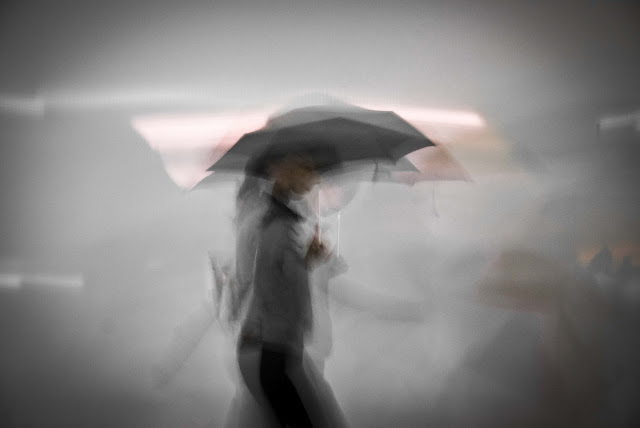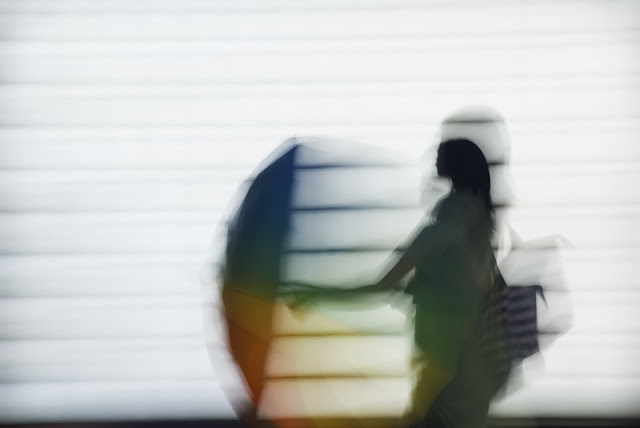Brussels, Belgium
Going through everyday life, our days frequently are accompanied by little dreams in between. Figuring out possibilities, recalling past events, imagining the future, constructing new imagery. Although they most of the times don’t have the spontaneous character of dreams one might see when sleeping, they still are similar to them in that they transcend time and space. Seemingly making it possible to do away with omnipresent categories and causalities of everyday life, they enable the reconstruction of new horizons of possibilities. And meeting Michael Chia I found out that it can be possible to mould imagined possibilities into actual images and photographs. I met Michael in a surprisingly quiet café on a busy afternoon near Porte de Namur in Brussels to talk about his work as a full-time photographer. Word on the street was that he taught some of the best photography courses in Brussels, so I was eager to learn some tips and tricks in between myself.
Michael seems to enjoy the process of learning greatly. Thinking back of the first photography courses he had offered over 10 years ago, he remembers how they helped him to grow as a photographer over time. Especially his very first workshop had been an “eye opener”, he admits. He found himself trying to answer unexpected questions, to explain techniques as comprehensively as possible and to “level up” with the participants’ anticipation: all of this had been both work and fun at the same time, he says. What does he advice photographers? “Think analogue, shoot digital” is one of the fundamental rules for him when it comes to photographing efficiently. Michael says that he likes to use all the possibilities modern technology brings and that he enjoys shooting with digital cameras. However, he argues, these means for engaging in photography should stay being instruments for achieving one’s goals. For him, it is the conceptual idea behind his projects, which determines the technology that he will use to create the images he envisions in his head. It becomes evident that he highly values creative thought processes prior and parallel to the active “shooting” of photographs. But what is it that he seeks to create in the first place?
His artistic work offers clues for the answer to this question. When looking at his two projects “Happy Rain” and “Dreams in Dreamland” the viewer is presented with two series of colourful and blurry images that leave a lot to the imagination. Both projects were predominantly produced during his travels to Southeast Asian cities, but a lot of the pictures could be set in any city of the world. “I have deliberately shot everything devoid of elements one could associate with stereotypes about Asian cities,” he notes, believing that “I can make you see, what I want you to see.” So his idea here was to leave subjective views and familiar imagery behind as far as possible, he continues. The goal was to “subtract the obvious” in order to leave space for imagination. His vision then was to create space for possibility as opposed to determining a set image. Thus space plays a big role in the conception behind both projects. “Instead of using the subject to determine the space, space was used to frame the subject,” he argues and refers to the blurred human movements in the images. Abstract spatial settings aside, why did he choose shoot primarily hazy images, I wonder?
Michael concentrated on haziness in order to create a notion of “fuzziness” and a feeling of expectation, he says. As if one has just woken up and remembers fleeting images from a dream. Also, the blurriness would serve to avoid static and stiff compositions, bring movement into the picture and ideally activate the imagination of the viewer, he hopes. By presenting human motion in correlation with processes around them, by connecting both in blurred compositions of colour and movement Michael follows his goal of portraying social action and moments of city dwellers. This is also why he chose rain to be the decisive element for the series “Happy Rain”: for him, rain becomes a social element when viewed as something connecting people on the streets.
Thinking about this idea and looking once more at the series, the notion of individual pedestrians trying to shield themselves from the raindrops with their umbrellas and therein forming a composition of colourful movements has something reassuring - and maybe even soothing and hopeful – to it. The haziness enhanced by the rain not only avoids the reminiscence of familiar categories; it also takes away spatial boundaries and opens up new rooms of possibilities. With the blurriness and colourfulness of the images offering new dimensions for imagination, the viewer can get carried away enough to enter the space of the image created. What might ensue could be an active participation of the viewer in the creative process of the photographer, forming own interpretations, imagining possibilities and rethinking categories while doing so. More and more I get the feeling that Michael Chia’s major goal might be to offer spaces of indefinite time and location for imagining new realities. And seen from this perspective, it seems that Michael has achieved his goal. Because if you allow yourself to let go just a little bit, looking at the images of these two series is indeed a bit like entering different “dreamlands” of possibilities.
The pictures shown here are from his projects "Happy Rain" and "Dreams in Dreamland". Take a look at his work! Also, you can catch a free e-book by Michael via facebook, featuring tips about how to improve your photography.













No comments:
Post a Comment